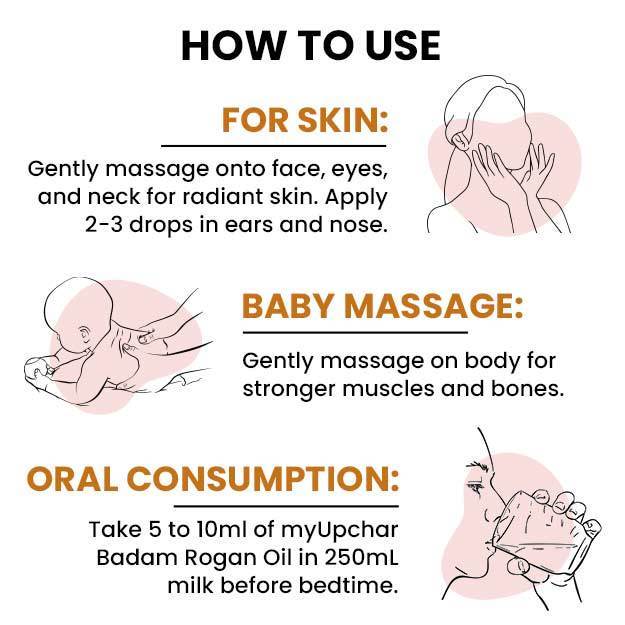In certain individuals, the body can (at times) detect typically harmless substances as foreign invaders and launch an immune response to fight them off. These substances are called allergens and this phenomenon is known as an allergic reaction. Upon identification of an allergen by a susceptible person’s body, the immune system produces inflammation with the help of certain cells (antigen-presenting cells, T-cells, mast cells, etc), immunoglobulins (predominantly IgE) and other mediating chemicals (like histamine). Allergies can be caused by allergens present externally in the environment (like pollen from flowers) or can be formed internally (examples include skin conditions like atopic dermatitis). However, not all individuals react to allergens the same way as certain individuals inherit the genetically determined trait of producing an exaggerated IgE response. Simply put, this characteristic, called atopy, makes a person more likely to have various allergies.
Besides the specific presentation of different allergies, there are some generalised allergic signs and symptoms like runny nose, sneezing, itchy rash, swelling, red eyes and possible shortness of breath. Sometimes with excessively strong immune reactions against allergens, anaphylactic shock may occur. Severely low blood pressure and bronchoconstriction are the most alarming factors of anaphylaxis that can prove fatal. It is regarded as a medical emergency and an urgent shot of epinephrine or adrenaline can be life-saving.
- How allergies arise in children
- Common causes of allergies in children
- Signs and symptoms of allergies in children
- Diagnosis of allergies in children
- Treatment of allergies in children
- Prognosis of allergies in children
How allergies arise in children
When an allergen (antigen) is introduced into the body, a dendritic cell or an antigen-presenting cell presents it to a naive T-cell (one of the two main immune cells in the body; other being B-cells). Naive, or undifferentiated T-cells, have the ability to convert to the subtype of T-cell (helper T-cell) that is required to carry out a specific immune reaction. In case of allergic reactions, a Th-2 response is generated, as opposed to the Th-1 response with infectious bacteria. Thus, after the allergen binds with the dendritic cell and triggers a Th-2 response, the helper T cells secrete a chemical called interleukins that activate B-cells. B-cells, in turn, causes the immunoglobulins to switch classes (reflected by the alphabet denoting the type of immunoglobulin) and produce IgE with a specific binding affinity to the allergen. Thereafter, the IgE, bound with the allergen antigen, attaches to mast cells. Granules storing inflammatory chemicals inside the mast cell dissolve in response to this attachment and pro-inflammatory substances, including histamine, are released. Histamine causes blood vessels to dilate, leading to swelling and a drop in blood pressure.
(Read more: Home remedies for allergic rhinitis)
Atopy: Furthermore, certain individuals have the genetically-inherited trait to produce more IgE, the key immunoglobulin in the allergic response. This characteristic of atopy therefore makes these children more susceptible to having various allergies.
Hygiene hypothesis: It has been hypothesised that in countries or communities where subclinical infections are lesser, allergies tend to have a higher incidence. This is said to be the case as due to the lack of Th-1 response produced by a bacterial infection, Th-2 response is heightened. Therefore, more IgE is available in such cases and allergic reactions are more rampant.
Allergens: Allergens are antigens that generate IgE-mediated immune responses. These seemingly harmless substances are either present externally (I.e. in the environment; exogenous) or internally (endogenous).
Common causes of allergies in children
Many allergies get diagnosed in childhood due to exposure to the culpable substance. Some common triggers for allergic reactions in children include:
- Outdoors: Tree pollen, plant pollen, insect bites or stings
- Indoors: Pet or animal hair or fur, dust mites and mold
- Irritants: Cigarette smoke, perfume and car exhaust
- Foods: Peanuts, eggs, milk and milk products
(Read more: Dust allergy)
Signs and symptoms of allergies in children
Allergic reactions can occur at any site in the body and present accordingly. Eyes, skin, mucous membranes, nose, throat and the stomach lining are commonly affected as they are often the first barrier of contact for exogenous allergens. Common signs and symptoms of allergic reactions in children include:
- Hay fever (allergic rhinitis): It is a common affliction of allergy in young children. It presents with an itchy, running nose, sneezing, nasal congestion and postnasal drip (excessive nasal secretions that trickle down the throat and pool there). Chronic post nasal drip can produce inflammation of the sinuses (sinusitis).
- Nasal congestion: Chronic nasal congestion, or stuffy nose, in children is most commonly caused by allergies. A severely blocked nose can even cause the child to subconsciously resort to mouth breathing, especially at night while sleeping. This can cause anomalous growth and development of facial bones, palette and teeth. Furthermore, it can cause nasal septum deviation.
- Ear infections: Histamine released by mast cells as a result of allergic inflammation causes dilation of blood vessels and extravasation of fluid. This accumulated fluid in the ear promotes growth of bacteria by acting as a nutritive medium. Thus, ear infections are common in allergies. The first sign of ear infection in babies is often decreased hearing and reduced responsiveness to sound. Chronic allergies can interfere with the hearing ability of growing children and even their speech development. Other symptoms are itchy, painful ears that feel full.
- Food allergies: Sometimes, a baby can develop allergies while being breastfed to foods their mother consumes. While some allergies, like those to milk, soy and egg, are often outgrown with age, few allergies like those to peanuts, tree nuts (pecans, cashews, walnuts, etc ), fish and shellfish last a lifetime. Peanuts and milk are the most common food triggers for allergic reaction in children. Peanuts and shellfish allergies can be so severe that they precipitate an anaphylactic shock.
Diagnosis of allergies in children
After taking a thorough history, focused on discerning the possible source of exposure, and proper examination, the doctor may conduct some tests on children to find what is producing the allergic reaction.
- Skin test: A small sample of the suspected allergen (pollen, animal dander, etc.) is placed on a small area of skin and then the skin is scratched. If the patient is allergic to a certain substance, IgE antibodies towards it will be present in the skin scraping. Additionally, a small bump, like a mosquito bite, is produced in around 15 minutes.
- Blood test: Blood tests are done in patients with other preexisting skin conditions or very recent skin allergic reaction in whom skin tests wouldn’t be possible. The radioallergosorbent test (RAST) is the most common blood test that measures the concentration of immunoglobulin IgE against certain antigens in the blood.
- Challenge test: In order to gauge the severity of a possible allergic reaction to an antigen, a challenge test is done by an allergist. A very small amount of the known allergen is either consumed orally or inhaled by the children, and the allergic reaction is observed and interpreted by the doctor.
(Read more: Allergy Test)
Treatment of allergies in children
Managing allergic reactions is, in part, about avoidance of undue exposure to allergens by lifestyle modification and medicating symptoms to prevent long-term complications.
Lifestyle modification: After an allergy towards a certain allergen is diagnosed in a child, the best means to prevent a reaction is to avoid the allergen. This requires lifestyle modification to a certain extent, which can be done by:
- Staying indoors during the pollen season
- Ensuring the child bathes and changes clothes after playing or coming home from outside
- Controlling dust in the home, especially in the child’s quarters
- Choosing air-conditioning over open windows
- Using dehumidifiers in damp areas
- Keeping emergency medication (like inhalers for known asthmatics and epinephrine) on hand
- Checking on the ingredients of the food before eating
(Read more: Elimination Diet)
Medication: Treating the common signs and symptoms of allergic rhinitis is important to prevent chronic sinusitis, speech defects, mouth breathing and even deviated nasal septum.
- Antihistamines: These drugs reduce histamine release and therefore diminish inflammatory signs and symptoms. Commonly used ones are cetirizine, loratadine and fexofenadine.
- Nasal sprays: They help alleviate stuffy nose when used judiciously. However, excessive routine use can cause rebound stuffiness due to turbinate hypertrophy and should therefore be avoided. Fluticasone nasal spray is readily available.
- Decongestants: Oxymetazoline nasal drops are used to unblock stuffy noses. However, it can produce rebound stuffiness if used excessively.
- Asthma drugs: Depending on frequency, severity and time of asthma attack, stepwise medical therapy is instated. This can include inhalers with beta agonist (salbutamol, salmeterol, etc.), muscarinic antagonist (ipratropium bromide), low or high dose steroids or oral drugs like steroids, theophylline, etc.
- Allergy shots (allergy immunotherapy): In case allergies are not controlled adequately with medications for over three years, your doctor may consider immunotherapy shots. Small amounts of the allergen you are susceptible to is injected into your upper arm once or twice a week. Slowly, the dosing of the shots will be increased for your body to build immunity against the allergen. Thereafter, the frequency of the doses will be reduced and the signs and symptoms of the allergy will slowly fade.
- Allergy tablets (sublingual immunotherapy): This method is similar to allergy shots; however, instead of receiving injections that may be a source of apprehension in young children, oral tablets are given by placing them under the tongue.
(Read more: Skin Allergy)
Prognosis of allergies in children
Some allergies like milk, soy and egg allergy are outgrown by children with age, whereas some persist lifelong. Lifelong allergies could also be caused by food allergens like peanuts and shellfish.
Doctors for Allergies in children

Dr. Anil Pathak
Pediatrics
42 Years of Experience

Dr. Pritesh Mogal
Pediatrics
8 Years of Experience
Dr Shivraj Singh
Pediatrics
13 Years of Experience


























